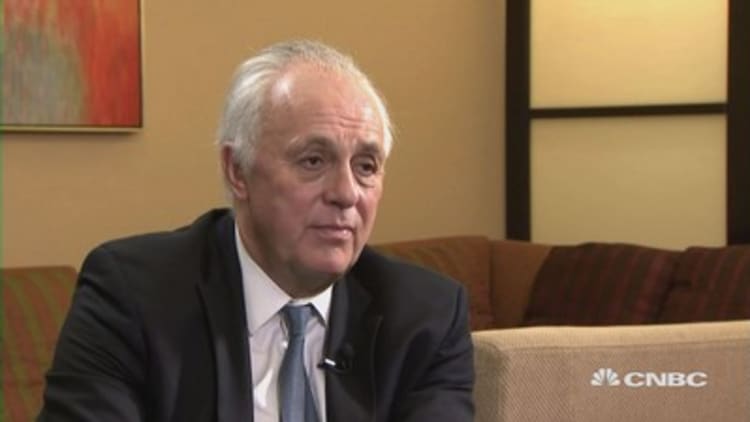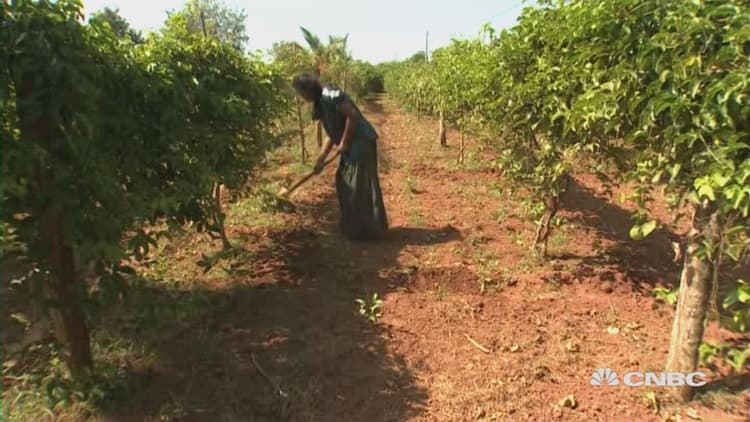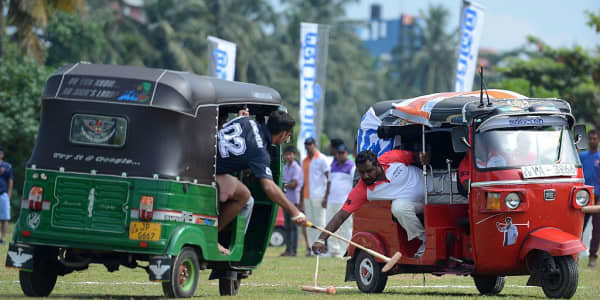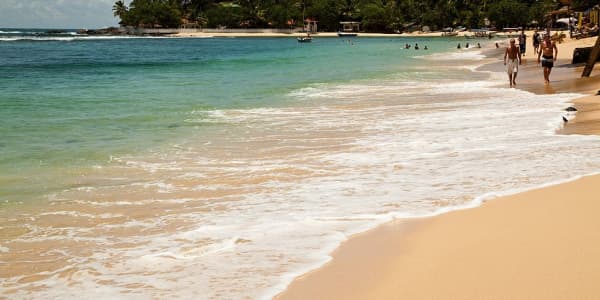Seven years after the end of a devastating civil war, Sri Lanka's northern province lags behind the rest of the country on economic development, and the catch-up process is proving long and tough.
The United Nations estimates about 40,000 people were killed in the 26-year civil war between the government and a separatist group, the Liberation Tigers of Tamil Eelam (LTTE). International observers accuse both factions of human rights abuses during the conflict, which was born from years of state discrimination against the ethnic Tamil minority.
At the World Economic Forum in Davos this year, Sri Lankan Prime Minister Ranil Wickremesinghe said the nation's top priorities were promoting reconciliation, rehabilitation and reconstruction in conflict-hit areas, as well as bolstering democracy—challenges that are directly related to the north, highlighting just how crucial the province is to national development.
But progress on those fronts has been mixed so far.
Tallying the damage
While the war affected the entire country, the north—made up of five districts: Jaffna, Kilinochchi, Mannar, Mullaitivu and Vavuniya—suffered the worst damage because it was the LTTE's headquarters and the focus of the government's offensive.
But determining the extent of economic losses is near impossible, experts say.
"You won't find any such data. Even much of the gross domestic product (GDP) numbers were estimates as data collection by government agencies was not permitted," says Dushni Weerakoon, deputy director and head of macroeconomic policy at the Institute of Policy Studies of Sri Lanka.
In the years following the war's end in 2009, nominal GDP growth for the province surged more than 20 percent, reflecting increased income-generating activities, according to the Sri Lankan central bank.
But growth slowed to 8.3 percent in 2014, the latest data available. While 8 percent may still seem high, economists attribute it to the low base effect. For 2014, the area contributed 3.6 percent of Sri Lanka's overall GDP, the lowest among the country's nine provinces.
Rebuilding the north
Former president Mahinda Rajapaksa was criticized for not doing enough to heal the wounds of ethnic Tamils after war ended but that's changed under his replacement, President Maithripala Sirisena.
Since taking power in 2015, he's been lauded for peace measures such as rebuilding homes, returning land, releasing suspected former Tamil rebels, lifting a ban on Tamil organizations and issuing "missing" certificates to the families of people who disappeared in the conflict, which entitles them to compensation, land deeds and pension funds.
Still, the problem of generating livelihoods for conflict-affected families is unresolved, explained Weerakoon.
"Many of those families have incurred or taken on higher debt over the last two to three years trying to revive farming or non-farming activities."
Under Rajapaksa, the region did benefit from critical infrastructure projects, including road networks and electricity, Weerakoon notes, but going forward, she recommends officials to take a more targeted approach to reinvigorating the north. But there is no blanket solution, she cautions.
"Now, you need to identify where pockets of poverty are and then design economic relief programs that will really help people."
The province's poor standard of living remains a key concern.
The median monthly household per capita income stands at about $37 (5,540 Sri Lankan rupees), the second-lowest after the eastern province's $36. In comparison, the national figure is around $53, according to the government's most recent household income survey, done in 2012-2013.
Youth unemployment is one of the region's top challenges, with about 60 percent unemployment in main northern towns, including Mullaitivu, Jaffna and Kilinochchi, as of 2014, according to non-governmental organization Swiss Labour Assistance. Meanwhile, local media regularly report on the province's alarming spike in liquor and drug abuse.
Agriculture remains the basis of the northern economy, with crops, livestock and fisheries as pivotal sub-sectors, but upgrades are badly needed to create more jobs.
The existing marine and lagoon-based fishery sector needs to be modernized so the population can benefit from under-tapped fishing grounds, said the Northern Provincial Council (NPC) in a 2015 report. As the province's legislative body, the NPC also recommended creating new aquaculture-based industries, seeing as the province boasts 40 percent of Sri Lanka's renowned coastline.

Private investors needed
More private investment in areas such as construction, health care, hospitality and trade is vital to enhancing household incomes, G. S. Palihakkara, governor of the northern province, told local media last year.
Cargills Ceylon offers a glimmer of hope. The diversified conglomerate, with businesses in retail, banking and food manufacturing, plans to increase its activity in the north.
The company is considering investing $5 to $6 million in the region in 2016-17, after building the $6 million Cargills Square Jaffna in 2015—a luxury family entertainment mall that is the first of its kind in the province.
To date, Cargills has invested about $15 million in the north, Ranjit Page, deputy chairman at Cargills, says. By further improving infrastructure, he believes the province can achieve higher growth and increase engagement with the rest of the country.
"Changing the mindset in the north was a challenge for us," notes Page. "They have been used to conflict, and hearing guns off and on...For them to believe in a corporate from another part of the country is a challenge."
One of the areas Cargills is investing heavily within the north is dairy; a seemingly under-developed sector in a country whose domestic milk production meets only 20 percent of demand.
"We already set up a little processing, packaging center in Killinochchi, and we'll be putting much more money in developing the animals and also agriculture," Page notes.

Indeed, private players are key to a northern recovery, since Colombo has little capacity to offer further assistance, explains Romita Das, a senior analyst at consultancy Control Risks.
Sri Lanka has a major balance of payments crisis, she noted, with government debt to GDP at around 75.5 percent. Moreover, it is typically easier for the government to seek foreign funding for former war zones, she added.
Earlier this month, Colombo said it would halt excessive borrowing as it continued negotiations with the International Monetary Fund for an estimated $1 billion loan.
Scars still to heal
While separatism fervor has ebbed as citizens welcome a return to stability, there is a desire for devolution of power to the regional level, particularly when it comes to land and policing rights, says Das.
Devolution of the northern and eastern powers is the 13th amendment in the Sri Lankan constitution, which was updated in 2015, but it has never been implemented.
An equitable power sharing structure is crucial to resolving the nation's entrenched racial divisions, particularly as greater regional autonomy was a key request Tamil rebels made during wartime negotiations with Colombo, says Professor Subrata Mitra, director of the Institute of South Asian Studies at the National University of Singapore. But there's no consensus on how this can be achieved, he adds.
Moreover, the government has yet to comply with the U.N.'s request to set up a valid judicial mechanism in a war probe of alleged human rights violations, Das points out.
Sirisena offered to establish a truth and reconciliation commission last year but the U.N. said the country was "not yet ready or equipped" to conduct a "credible investigation" that would address the gravity of the suspected violations.





